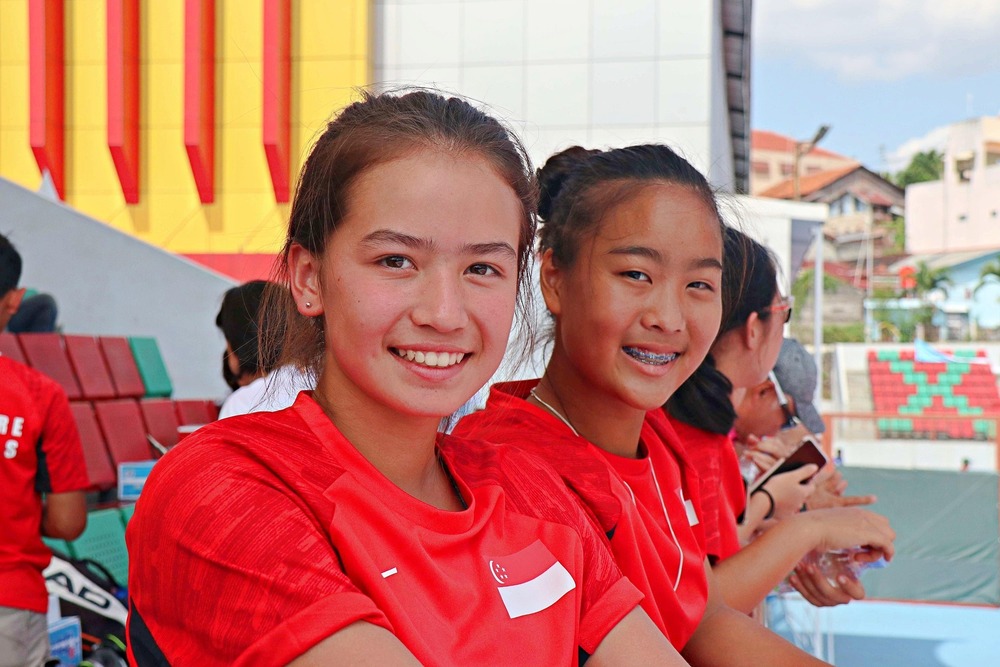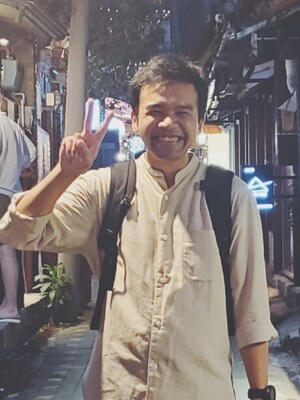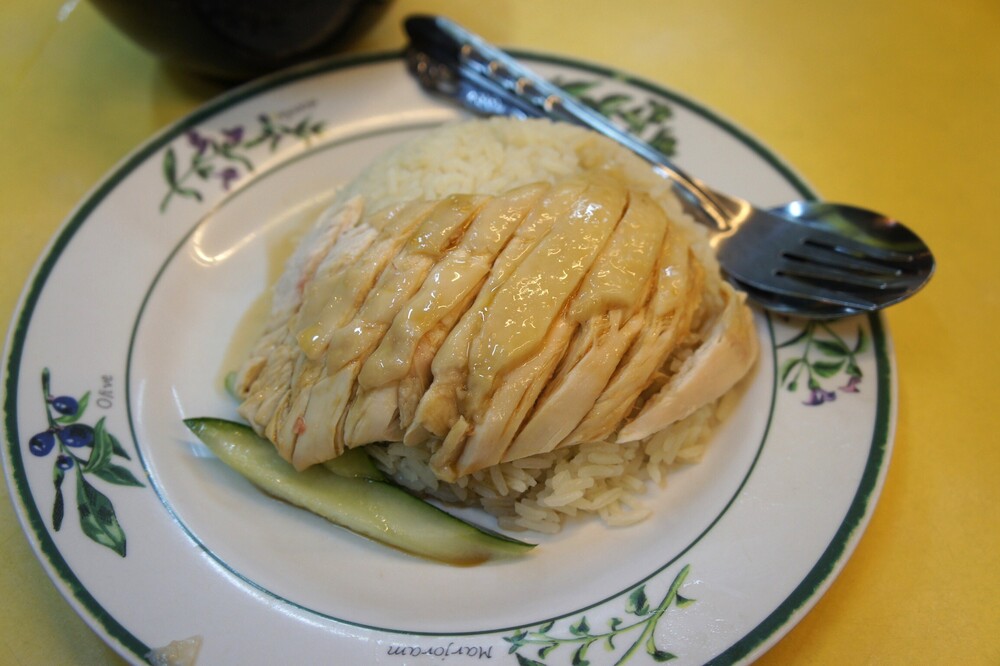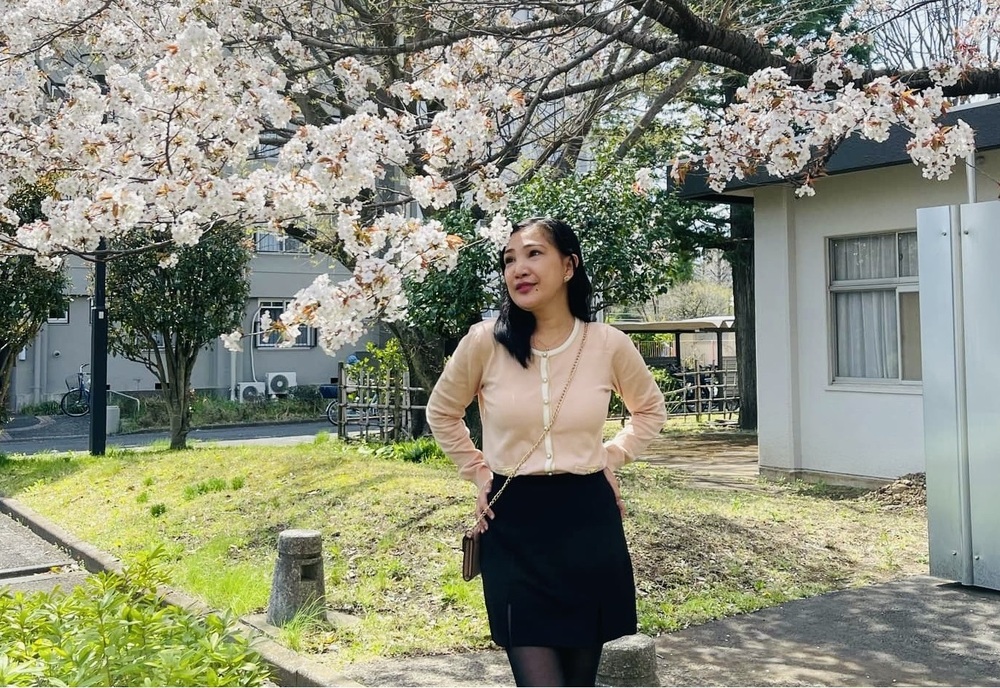
- Writer / 記事を書いた人
-

- Haruka
-
 Singapore(シンガポール)
Singapore(シンガポール)
Article
記事
Lessons in Lunch & Language
昼食と言語の学び
▼ 記事の音声を再生
<Let's learn!>
・give rise to …
・a variety of
・be spoilt for choice
=====================================
Unlike Japan, which is largely a homogeneous society, Singapore is a multicultural nation with a diverse population comprising various ethnic groups, primarily Chinese, Malay, Indian, and others. English is the common language used for communication in Singapore, and is also the main medium of instruction in schools. This cultural diversity gives rise to several interesting differences when compared to the schooling system in Japan.
Lunch Culture
In Japan, school lunch is provided and carefully planned to ensure a healthy and balanced diet. These meals are prepared according to national nutrition guidelines and are served in classrooms by the students themselves, as a part of fostering responsibility and teamwork.
In Singapore, there is no school lunch program. Instead, students usually buy their meals in the school cafeteria, which offers a variety of local dishes. Bringing food from home (such as a bento) is relatively uncommon and not part of Singaporean school culture.
In Singapore, the variety of food in schools reflects the nation’s ethnic mix - including Chinese, Malay, Indian, and Western cuisines. While it may seem like students are spoilt for choice, the diversity also meets various religious dietary needs. For example, Malay students only eat halal food, some Indians are vegetarian, and some Chinese and Indian communities avoid beef. Though it may seem complex, most Singaporeans understand and respect these dietary practices.
Mother Tongue Lessons
In Japan, when you have kokugo (Japanese language) lessons, you wouldn’t expect to switch classrooms - everyone stays in their homeroom, right? In Singapore, it’s quite the opposite. During Mother Tongue lessons, students leave their homeroom classes and go to different classrooms based on the language they’re studying - typically Chinese, Malay, or Tamil. Because not everyone takes the same language, class sizes can vary. Sometimes, when a group is small, students from different classes (but with the same language background) are combined into one class for the lesson.
Cleaning Culture
In Japan, students actively take part in cleaning their schools - it’s a regular part of the school day and teaches responsibility and respect. In Singapore, while students are expected to keep their own classrooms tidy, it’s not common practice for the entire school to set aside a specific time for cleaning. Instead, schools usually employ cleaners who perform daily cleaning duties to keep the overall cleanliness of the school environment.
- 日本語訳を見る
大部分が均質な社会である日本とは異なり、シンガポールは主に中国系、マレー系、インド系、その他から成る多様な民族で構成された多文化国家です。シンガポールでは英語がコミュニケーションのための共通言語として使われており、学校でも主要な指導言語となっています。この文化的な多様性は、日本の学校制度と比較すると、いくつか興味深い違いを生み出します。
昼食文化
日本では、学校給食が提供され、健康的でバランスの取れた食事ができるよう綿密に計画されています。これらの食事は国の栄養ガイドラインに従って準備されており、責任感とチームワークを育む一環として、生徒たち自身によって教室で配膳されます。
シンガポールには、学校給食制度がありません。その代わり、生徒たちは通常、様々な郷土料理が提供される学校のカフェテリアで食事を購入します。(お弁当のように)家から食事を持ってくることは比較的まれで、シンガポールの学校文化にはありません。
シンガポールでは、学校で提供される食事の多様性がその国の民族構成を反映しており、中華、マレー、インド、西洋料理などが含まれています。一見すると、生徒たちは選択肢が豊富で贅沢な悩みを抱えているように見えるかもしれませんが、その多様性はまた、様々な宗教上の食事規定にも対応するという役割を果たしています。例えば、マレー系の生徒はハラール食品のみを食べ、一部のインド系の人々はベジタリアンであり、また一部の中国系やインド系のコミュニティでは牛肉を避けます。複雑に見えるかもしれませんが、ほとんどのシンガポール人はこれらの食事に関する習慣を理解し、尊重しています。
母語の授業「国語」
日本では、国語の授業があるときに教室を移動するなんて考えませんよね。みんな自分のホームルームにいるのが普通ですよね?シンガポールでは、まったく逆なのです。国語の授業中、生徒たちは自分のホームルームを離れ、学習している言語(通常、中国語、マレー語、またはタミル語)に基づいて異なる教室へ移動します。全員が同じ言語を学ぶわけではないため、クラスの人数は様々です。生徒のグループが少ない場合、異なるクラスの生徒(ただし同じ言語を背景に持つ生徒)が、その授業のために一つのクラスにまとめられることもあります。
清掃文化
日本では、生徒たちが積極的に学校の清掃に参加します。これは学校生活の日常的な一部であり、責任感と尊敬の念を教えます。シンガポールでは、生徒たちは自分の教室をきれいに保つことが求められますが、学校全体で清掃のために特定の時間を設けるのは一般的な習慣ではありません。その代わりに、学校は通常、学校環境全体の清潔さを保つために日常の清掃業務を行う清掃員を雇用しています。


Key Points
キーポイント
Repeat each word(s) and example sentence(s) after your teacher/tutor.
先生の後に続いて、各フレーズ、単語、例文を言ってみましょう。自習の場合はスピーカーボタンを押して聞いてみましょう。
Key Phrases 重要表現
- give rise to …
-
~を生み出す、~を引き起こす
-
Many cultures mixing in Singapore gave rise to amazing food.
シンガポールで多くの文化が混ざり合い、素晴らしい食べ物が生まれました。
- be spoilt for choice
-
どれを選ぼうかとぜいたくな気分を味わう
選択肢が多すぎて選ぶのに困る
-
Beach or city? I'm spoilt for choice for my trip.
ビーチか都市か?私は旅行の選択肢が多すぎる。
- take part in …
-
~に参加する
-
I'm thinking of taking part in an English speech contest during the summer break.
私は夏休み中に、英語のスピーチコンテストに参加しようかなと思っています。
Key Phrases 重要表現
- homogeneous
-
hòʊmədʒíːniəs
均質な、同種の、均一な
形容詞
- consisting of parts or having qualities that are the same
-
Water and oil don't mix, so they don't form a homogeneous liquid.
水と油は混ざらないので、均一な液体にはなりません。
- multicultural
-
ˌmʌltiˈkʌltʃɝʌl
多文化的な
形容詞
- involving or consisting of people from many cultures
-
Tokyo is becoming increasingly multicultural, with more foreign residents than ever.
東京は、これまで以上に外国人居住者が増え、ますます多文化になってきています。
- comprise
-
kəmprάɪz
構成される、成る
動詞
- to have something as its parts or members
-
The team, comprising three experts, solved the problem.
3人の専門家から成るチームが、その問題を解決した。
- ethnic
-
éθnɪk
民族(的)の
形容詞
- relating to somebody's race and culture
-
Our school has students from various ethnic backgrounds.
私たちの学校には、様々な民族的背景を持つ生徒がいます。
- nutrition
-
n(j)uːtríʃən
栄養
名詞
- the process in which the body takes in the healthy substances found in food
-
The packaging of this food has detailed nutrition information.
この食品のパッケージには、栄養情報が詳しく載っています。
- foster
-
fˈɔːstɚ
育む、育てる
動詞
- to encourage the development or growth of something
-
This community activity plays an important role in fostering cross-cultural understanding.
この地域活動は、異文化理解を育む上で重要な役割を果たしています。
Others その他
- largely
-
lάɚdʒli
大部分は(が)、主に
副詞
- mostly
-
The audience was largely composed of young people.
聴衆は、大部分が若者で構成されていました。
- primarily
-
prɑɪmérəli
主に、第一に
副詞
- mainly
-
This book is written primarily for students of history.
この本は、主に歴史を学ぶ学生向けに書かれています。
- ensure
-
ɪnʃˈʊɚ
確保する、確実にする、保証する
動詞
- to make certain that something happens
-
Please ensure your safety by wearing a helmet.
ヘルメットを着用して、あなたの安全を確保してください。
- a variety of
-
ə vəˈraɪəti əv
様々な
形容詞句
- many different types of things
-
You can find a variety of cuisines in Singapore.
シンガポールでは、多種多様な料理を見つけることができます。
- halal
-
hɑːlɑ́ːl
ハラール
ムスリム(イスラム教徒)が許されているもの名詞
- correct according to Islamic law, for example following rules relating to the way animals are killed for meat
-
Pork is not halal for Muslims, so they cannot eat it.
豚肉はイスラム教徒にとってハラールではないので食べられません。
- dietary
-
dάɪətèri
食事の
形容詞
- connected with or contained in the food that you eat and drink regularly
-
Many athletes follow strict dietary rules to stay in top shape.
多くのアスリートは、最高の状態を保つために厳しい食事制限に従っています。
Practice
練習
Fill in the blanks to complete the sentence.
空欄を埋めて文章を完成させましょう。
New technologies often (___) (___)(___) new industries.
新しい技術はしばしば、新しい産業を生み出す。
ヒント:give rise to
- 回答を見る
New technologies often (give) (rise) (to) new industries.
I was (___)(___)(___) at the book fair and simply couldn't pick one.
ブックフェアでは、あまりにも選択肢が豊富で、とても一つには絞れませんでした。
ヒント:spoilt for choice
- 回答を見る
I was (Spoilt) (for) (choice) at the book fair and simply couldn't pick one.
Did you (___) (___) (___) the sports day last week?
あなたは先週の運動会に参加しましたか?
ヒント:take part in
- 回答を見る
Did you (take) (part) (in) the sports day last week?
Article
記事(英文のみ)
Read the article aloud on your own or repeat each paragraph after your teacher/tutor.
記事を自分で読む、または先生に続いて段落毎に読んでみましょう。
Lessons in Lunch & Language
<Let's learn!>
・give rise to …
・a variety of
・be spoilt for choice
=====================================
Unlike Japan, which is largely a homogeneous society, Singapore is a multicultural nation with a diverse population comprising various ethnic groups, primarily Chinese, Malay, Indian, and others. English is the common language used for communication in Singapore, and is also the main medium of instruction in schools. This cultural diversity gives rise to several interesting differences when compared to the schooling system in Japan.
Lunch Culture
In Japan, school lunch is provided and carefully planned to ensure a healthy and balanced diet. These meals are prepared according to national nutrition guidelines and are served in classrooms by the students themselves, as a part of fostering responsibility and teamwork.
In Singapore, there is no school lunch program. Instead, students usually buy their meals in the school cafeteria, which offers a variety of local dishes. Bringing food from home (such as a bento) is relatively uncommon and not part of Singaporean school culture.
In Singapore, the variety of food in schools reflects the nation’s ethnic mix - including Chinese, Malay, Indian, and Western cuisines. While it may seem like students are spoilt for choice, the diversity also meets various religious dietary needs. For example, Malay students only eat halal food, some Indians are vegetarian, and some Chinese and Indian communities avoid beef. Though it may seem complex, most Singaporeans understand and respect these dietary practices.
Mother Tongue Lessons
In Japan, when you have kokugo (Japanese language) lessons, you wouldn’t expect to switch classrooms - everyone stays in their homeroom, right? In Singapore, it’s quite the opposite. During Mother Tongue lessons, students leave their homeroom classes and go to different classrooms based on the language they’re studying - typically Chinese, Malay, or Tamil. Because not everyone takes the same language, class sizes can vary. Sometimes, when a group is small, students from different classes (but with the same language background) are combined into one class for the lesson.
Cleaning Culture
In Japan, students actively take part in cleaning their schools - it’s a regular part of the school day and teaches responsibility and respect. In Singapore, while students are expected to keep their own classrooms tidy, it’s not common practice for the entire school to set aside a specific time for cleaning. Instead, schools usually employ cleaners who perform daily cleaning duties to keep the overall cleanliness of the school environment.
Questions
質問
Answer the questions based on the article.
記事の内容から質問に回答しましょう。
What is the main language of instruction in education in Singapore?
シンガポールでは教育において主に何の言語が使用されますか?
ヒント:~ is also the main medium of instruction in schools.
- 回答を見る
It is English.
How do students usually get their lunch in schools in Singapore?
シンガポールの学校では、生徒は通常どのように昼食をとりますか
ヒント:Instead, students usually buy their meals in the school cafeteria, which offers a variety of local dishes.
- 回答を見る
Students usually buy their meals in the school cafeteria.
What needs does the diversity of food in schools in Singapore meet?
シンガポールの学校における食事の多様性は、どのようなニーズを満たしていますか?
ヒント:the diversity also meets ~
- 回答を見る
It meets various religious dietary needs.
How do students attend classes during Mother Tongue lessons in Singapore?
シンガポールの母語の授業中、生徒はどのように授業を受けますか?
ヒント:During Mother Tongue lessons, students leave their homeroom classes and go to different classrooms based on the language they’re studying - typically Chinese, Malay, or Tamil.
- 回答を見る
Students leave their homeroom classes and go to different classrooms based on the language they’re studying.
Who cleans the schools in Singapore?
シンガポールでは誰が学校の清掃を行いますか?
ヒント:Instead, schools usually employ cleaners who perform daily cleaning duties to keep the overall cleanliness of the school environment.
- 回答を見る
Cleaners (employed by the school) clean the school.
Discussion
ディスカッション
Let’s have a discussion about the theme with your teacher/tutor or classmates.
先生やクラスメートとテーマについて話し合いましょう。
With your teacher/tutor 先生とのディスカッション
Would you like to attend a school in Singapore? Why or why not?
シンガポールの学校に通ってみたいですか?それはなぜですか?
Yes, I would./ No, I wouldn't, because ~.
What do you think about Singapore's Mother Tongue classes?
シンガポールの国語の授業についてどう思いますか?
I think it is ~.
Which do you prefer, Japan's school lunch system or Singapore's cafeteria style? Why?
日本の給食制度とシンガポールのカフェテリア方式、どちらの方が好きですか?それはなぜですか?
I prefer ○○ because ~.
With your classmates クラスメートとのディスカッション
Have you ever tried dishes like Chinese, Malay, Indian, and Western cuisines? What was it like?
中国料理、マレー料理、インド料理、西洋料理のような料理を食べたことはありますか?それはどうでしたか?
Yes, I have./ No, I haven't.
(If yes) I have tried ~ and it was ~.
What do you think would happen if cleaners were hired in Japanese schools?
もし日本の学校に清掃員が雇用されたら、どうなると思いますか?
I think that ~.
Besides English, what language would you want to be able to speak, and why?
英語以外に、何語が話せるようになりたいですか?また、それはなぜですか?
I would like to be able to speak ~ because ~.








